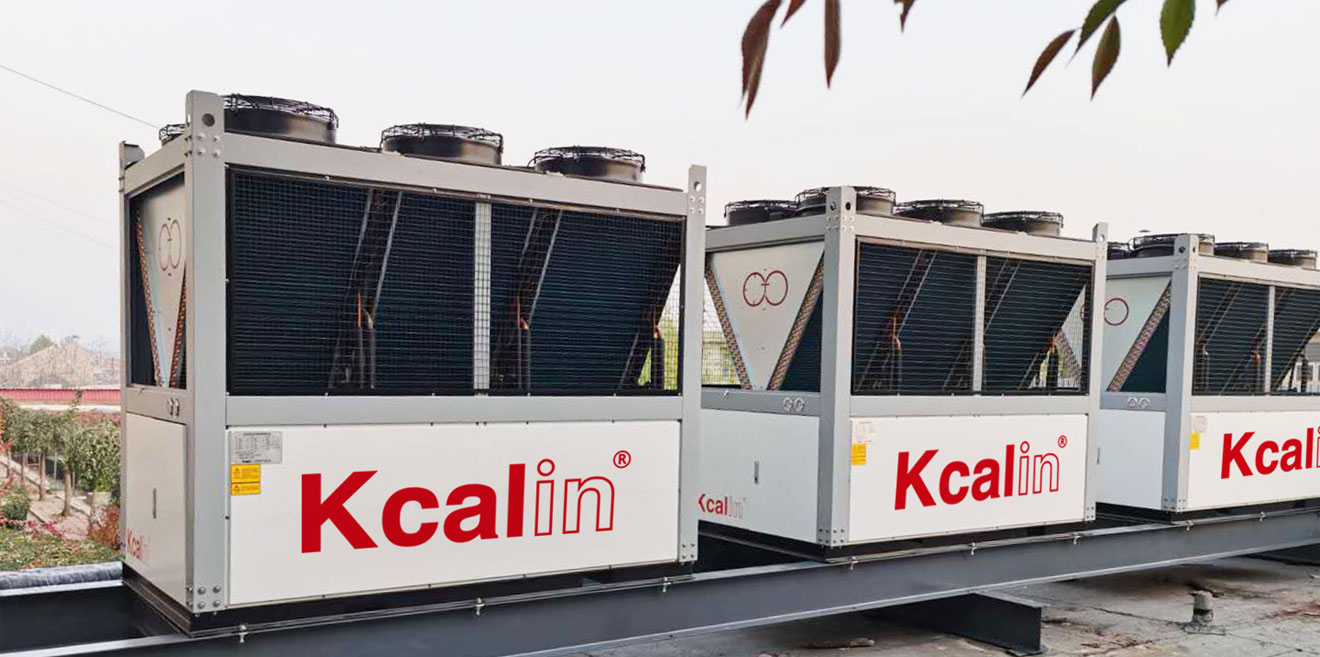In the cold winter, especially in the northern regions, heating is a crucial part of residents and businesses' lives. Traditional heating systems have been developed for many years, but the emergence of modern technology has brought us more choices. Among them, air source heat pump systems are highly popular due to their high efficiency and environmental protection characteristics. However, in extremely cold conditions, air source heat pump units may encounter icing problems, which poses a challenge to heating.
Let's first understand how the air source heat pump system works. This system utilizes heat pump technology to extract heat energy from cold outdoor air and then heat it up for indoor heating. The specific working principle is as follows:
Generator: The low-temperature and low-pressure refrigerant outside evaporates in the evaporator, absorbing the heat outside.
Compressor: The compressor compresses the evaporated refrigerant into high-temperature and high-pressure gas.
Condenser: High temperature and pressure gas releases heat in the condenser, transferring it to the indoor heating system.
Expansion valve: The high-temperature and high-pressure gas relaxes through the expansion valve, reducing the temperature and pressure, and preparing to re-enter the evaporator.
This process circulates continuously, converting outdoor heat into indoor heat to provide heating.
The icing problem of air source heat pump units

In extremely cold weather conditions, air source heat pump units may encounter icing problems. These issues typically arise in the following areas:
Outdoor unit icing: The evaporator and condenser surfaces of outdoor units may freeze, which can reduce system efficiency and even block.
Refrigerant issue: Under extremely cold conditions, the performance of the refrigerant may be affected, thereby reducing the heating capacity of the system.
Defrosting requirements: In order to solve the problem of icing, the air source heat pump unit needs to undergo periodic defrosting, which will increase the energy consumption and operating costs of the system.
System pressure issue: Ice formation may cause pressure fluctuations in the system, which may cause damage to the equipment.
Solving the icing problem of air source heat pump units
Although the problem of freezing under extremely cold conditions is challenging, there are some methods that can be taken to solve these problems and ensure the normal operation of the heating system:
Appropriate insulation: Ensure sufficient insulation of outdoor units and piping systems to reduce heat loss and risk of icing.
Fan assisted defrosting: Some modern air source heat pump systems are equipped with a fan assisted defrosting function to help remove icing.
Heating system: A heating system used indoors, such as an electric heater or underfloor heating system, can provide additional heating capacity in extremely cold conditions.
Regular maintenance: Regular inspection and maintenance of the air source heat pump system, including cleaning the evaporator and condenser, can reduce the risk of icing.
Choose the appropriate model: In extremely cold regions, choosing an air source heat pump unit model that is suitable for low-temperature conditions can reduce icing problems.
In order to solve the icing problem of air source heat pump units, scientists and engineers are constantly seeking innovative technological solutions. For example, the STS series air source heat pump units are equipped with new defrosting technology, which can be intelligently controlled according to actual needs to reduce energy waste.
Heating is a challenge in ice and snow underground. But modern air source heat pump systems provide us with an efficient and environmentally friendly heating option. Through appropriate maintenance, insulation, and the use of innovative technologies, we can solve the icing problem of air source heat pump units, ensuring warmth and comfort during cold winters. In the continuous pursuit of technological and engineering innovation, we will better utilize modern technology to warm our homes in a more sustainable way.







Comment